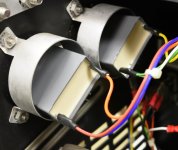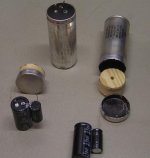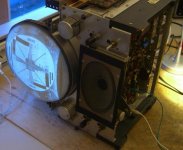Hi,
I would like to start testing our TU56 drive, but I have a lot of doubts about how to operate it.
What I did so far is to turn it on and connect it to the M868 board. Here is a list of questions:
1- Is it necessary to boot the machine in OS8 to test the drive? or is it possible to make it work without the OS?
2- If I set the front switches to either "REMOTE" or "LOCAL" both motors start spinning slowly in opossite directions, is this normal?
3- If I press either switch to rewind or forward nothing happens.
4- I noticed there are some switches close to the read/write heads, what are they for?
5- The light on the right side never turns on (I haven't tested if the light is ok)
6- If I'm able to boot the machine in OS8, how can I read the contents of a tape?
Thanks!
I would like to start testing our TU56 drive, but I have a lot of doubts about how to operate it.
What I did so far is to turn it on and connect it to the M868 board. Here is a list of questions:
1- Is it necessary to boot the machine in OS8 to test the drive? or is it possible to make it work without the OS?
2- If I set the front switches to either "REMOTE" or "LOCAL" both motors start spinning slowly in opossite directions, is this normal?
3- If I press either switch to rewind or forward nothing happens.
4- I noticed there are some switches close to the read/write heads, what are they for?
5- The light on the right side never turns on (I haven't tested if the light is ok)
6- If I'm able to boot the machine in OS8, how can I read the contents of a tape?
Thanks!




